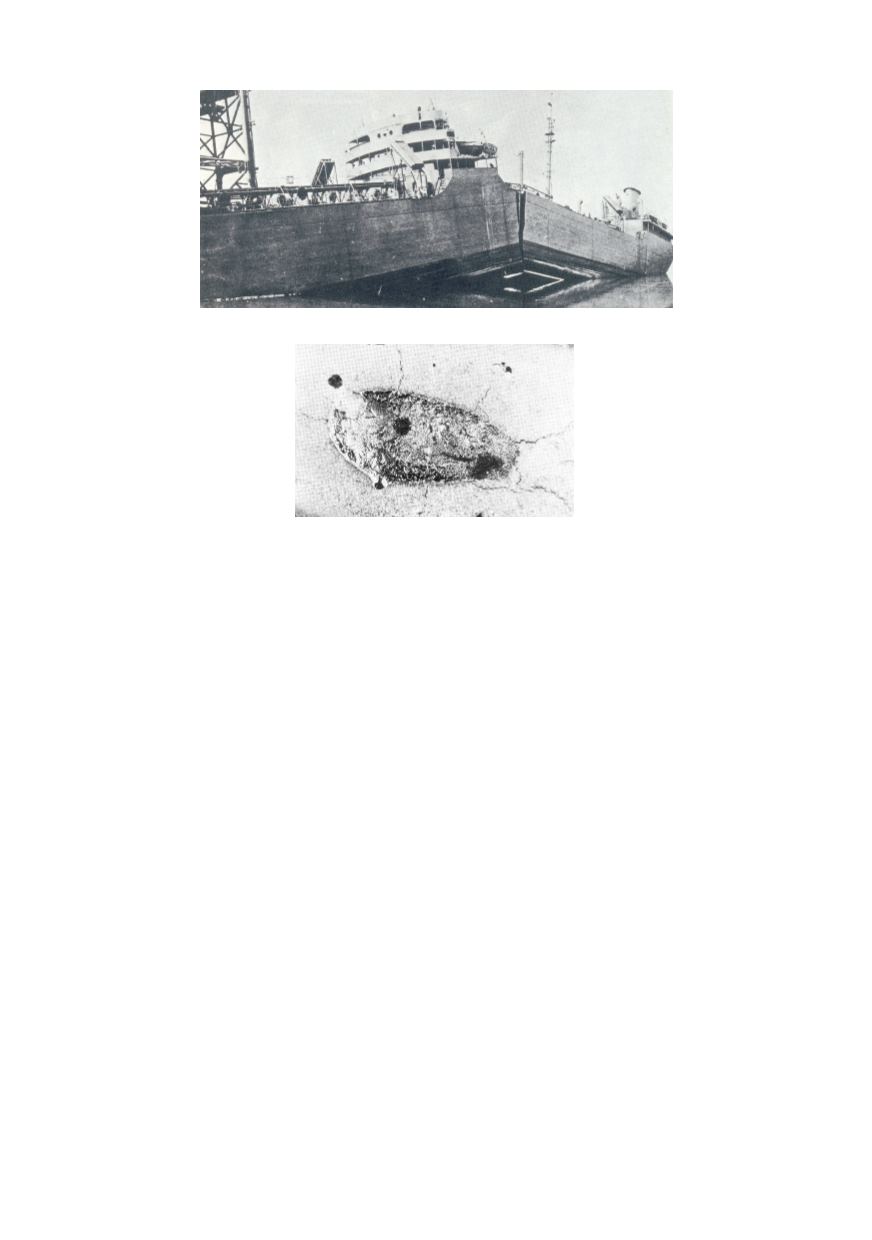

325
Figure 2: Failure of Liberty type ship “Schenectady” /5/
Figure 3. Welding arc strike. Cracks about 2 mm in size developed in hard heat-affected-zone
(HAZ) surrounding fusion starter /6/
2.1. Linear elastic fracture mechanics (LEFM)
Considering the crack in homogeneous material, FM developed models for descrip-
tion of stress and strain distribution ahead the crack tip, the singular location in the field,
and corresponding parameters for mathematical analysis. Intensive theoretical and
experimental, and later on numerical investigation of stress concentration in elastic range
around geometry transition and defects in loaded components enabled to involve crack
and its size in the stress analysis. This was done for elastic behaviour (linear-elastic
fracture mechanics – LEFM), using primarily the results of Grifith /8/ and of Irwin and
Kies /9/. In this way theoretically supported crack analysis allowed to define crack
parameters for plain strain condition, corresponding to generally accepted material
properties expressed in strength parameters.
In the analysis of fracture strength Griffith /8/ recognized that it is possible to derive a
thermodynamic criterion for fracture by considering the total energy change with
increasing crack length in a cracked body. Only if the total energy decreased would the
crack extend spontaneously under the applied stress. Using energetic approach in the
body as a whole, it is possible to neglect local stress concentration around the crack tip
and derive a useful expression for the fracture stress. The analysis performed by Griffith
is based on the situation shown in Fig. 4. He analyzed the changes in energy, which
occur if the crack is infinitesimally extended. New crack surfaces are created and since
the stresses and displacements immediately ahead of the infinitesimally extended crack
tip are identical to those ahead of the initial crack tip, the energy increase during crack
extension is simply the unit "work to fracture", 2
γ
, multiplied by the area of produced
new crack surfaces. Based on that, Griffith proposed that the crack driving force (CDF)
is involved by the difference between the energy released for crack extension and that


















